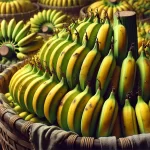The cultivation of plantain or banana (genus Musa) represents a fundamental pillar of the agricultural economy in numerous tropical and subtropical regions around the world, including vast areas of Latin America. Its importance lies not only in its nutritional value as an essential source of carbohydrates, vitamins, and minerals but also in its significant economic impact as a generator of employment and income for rural communities. For producers aspiring to maximize the quality and quantity of their harvests sustainably, a deep understanding of the crop’s phenological stages and the implementation of optimized agronomic management practices are crucial elements. This article delves into each phase of the plantain or banana life cycle, providing detailed and valuable technical information to achieve successful production.
Breaking Down the Phenological Stages of Plantain or Banana for Optimal Production
Stage 1: Initial Establishment – The Foundation of a Vigorous Harvest
The life cycle of the plantain or banana begins with the planting of asexual propagation material, which generally consists of suckers or offshoots from healthy and productive mother plants. The selection of vigorous suckers, free from pests and diseases, and of adequate size (approximately 1-1.5 meters in height) is a determining factor in ensuring rapid and uniform crop establishment.
Proper land preparation is equally crucial at this stage. It is recommended to conduct a soil analysis to determine its physical and chemical characteristics, correcting nutritional deficiencies and ensuring optimal drainage to avoid waterlogging problems that can affect root development and the health of young plants. Planting of the suckers should be done at an appropriate depth, maintaining optimal spacing between plants and between rows to facilitate crop management, air circulation, and sunlight penetration.
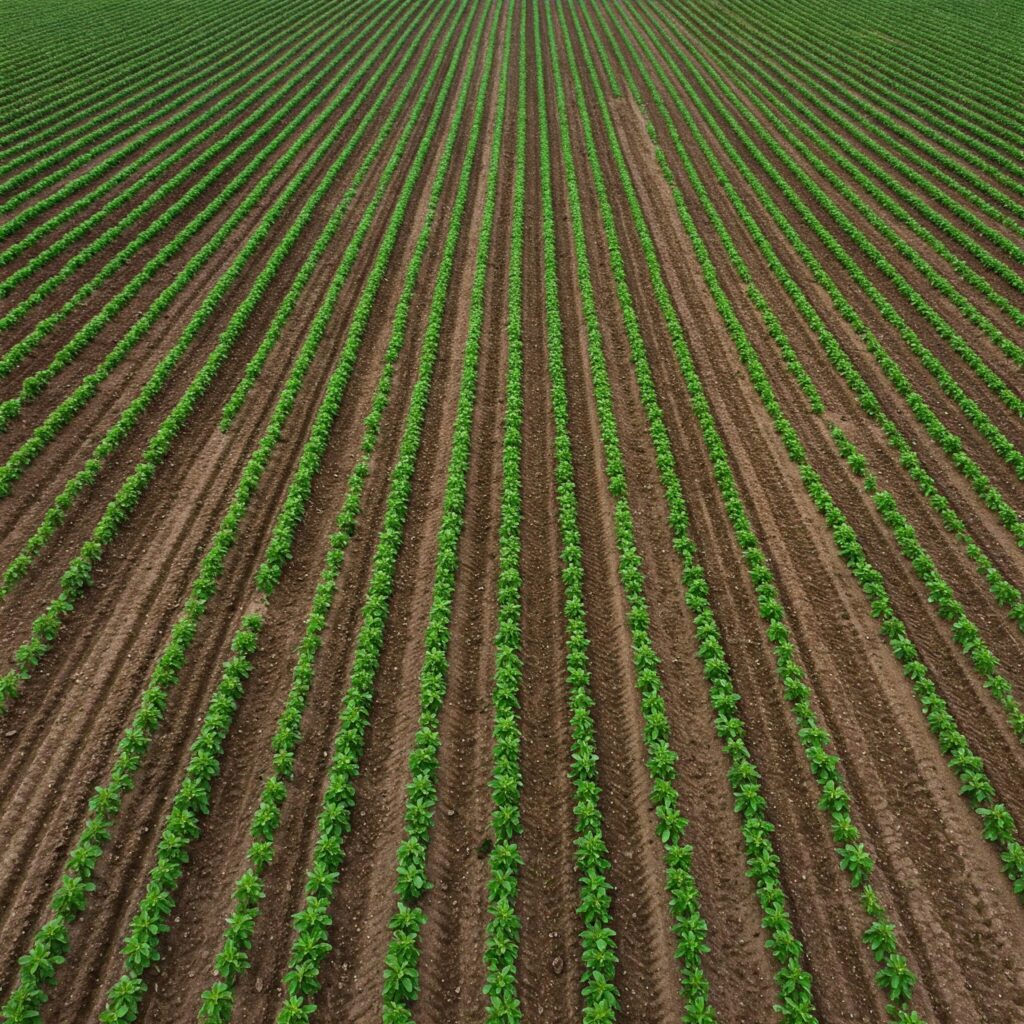
Stage 2: Active Vegetative Growth – Biomass Development for Production
The vegetative growth phase is characterized by rapid development of leaves and the pseudostem, the cylindrical structure formed by overlapping leaf sheaths that supports the plant. During this stage, the plant establishes the necessary biomass to support future fruit production. Balanced and adequate nutrition, with emphasis on the supply of nitrogen (for leaf growth), phosphorus (for root development), and potassium (for pseudostem robustness and disease resistance), is fundamental for healthy and vigorous growth.
Crop management during this phase includes essential practices such as efficient weed control, which compete for light, water, and nutrients; constant monitoring and timely control of pests (such as the banana weevil and nematodes) and diseases (such as yellow and black Sigatoka); and the implementation of an adequate irrigation program, adjusted to climatic conditions and the water needs of the plant in its different sub-phases of vegetative growth. Strategic pruning, removing old or damaged leaves, can improve air circulation and reduce the incidence of foliar diseases.
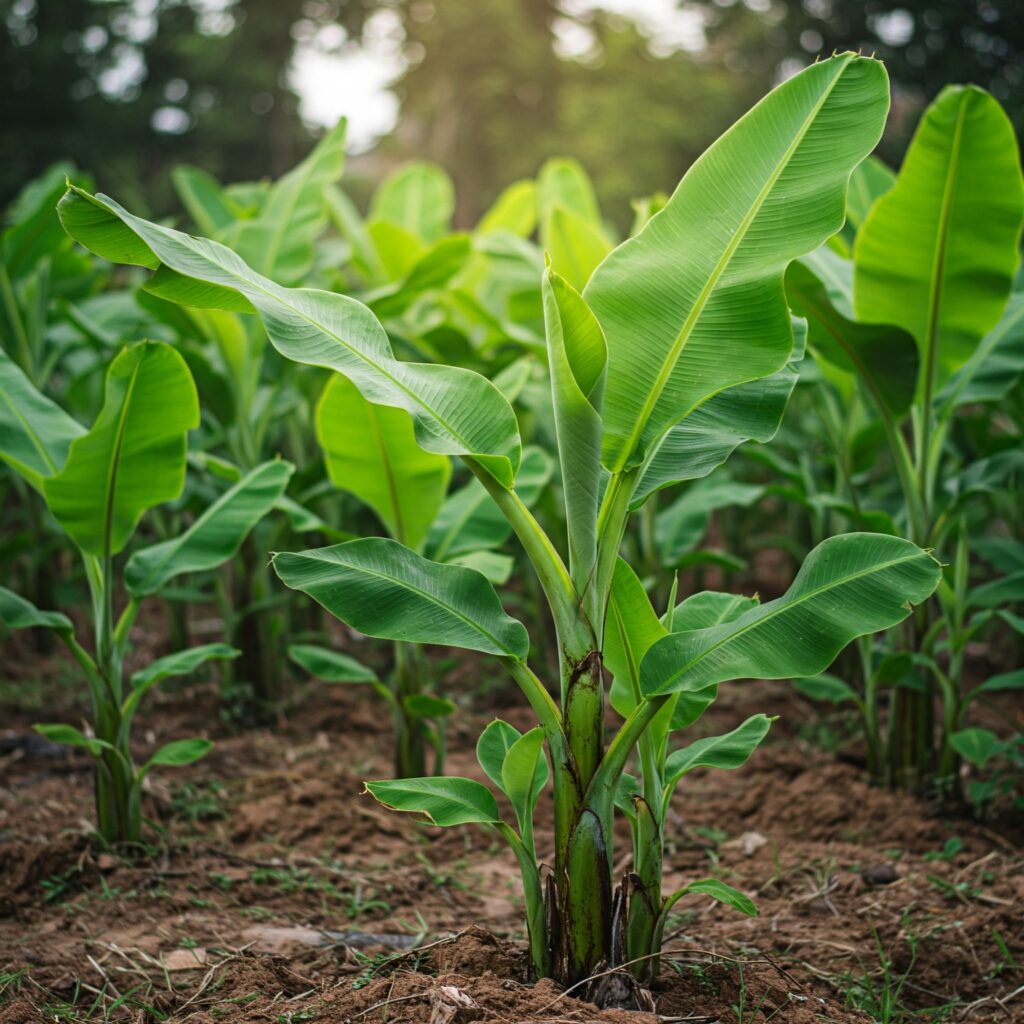
Stage 3: Floral Initiation and Flowering – The Transition to Reproduction
The transition from the vegetative to the reproductive phase begins with the differentiation of the floral bud within the pseudostem. This process is influenced by factors such as plant size and maturity, environmental conditions (temperature, humidity, photoperiod), and nutritional status. Once the floral bud emerges, the inflorescence develops, a hanging structure that contains numerous flowers arranged in clusters (hands).
Monitoring for pests and diseases that can affect the inflorescence, such as banana flower thrips, is crucial at this stage to ensure adequate pollination and good fruit set. In some plantain varieties, pollination is parthenocarpic, meaning the fruits develop without fertilization. However, in other varieties, natural or assisted pollination may be necessary for optimal production. Bagging the flower bunches with perforated polyethylene sleeves is a common practice to protect future fruits from damage by insects, birds, and rubbing, as well as to promote a microclimate that can accelerate development.
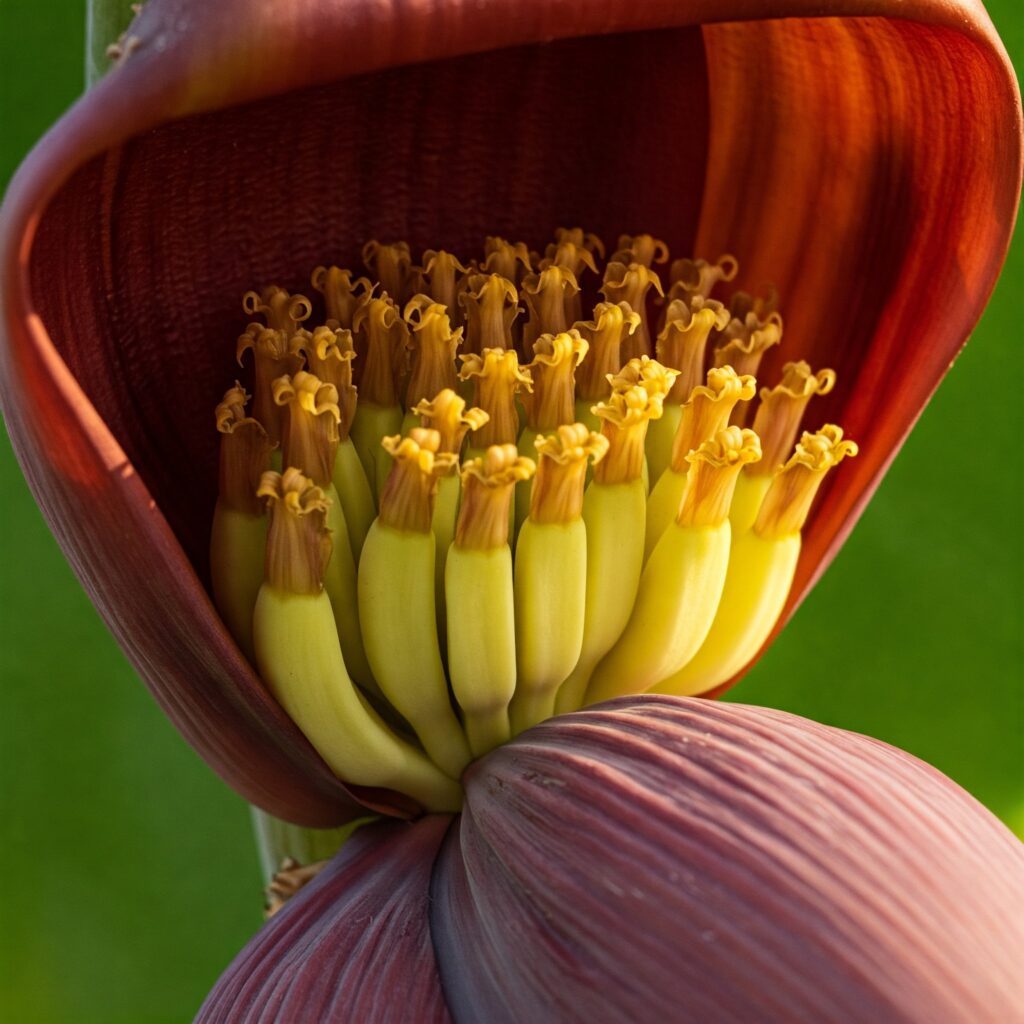
Stage 4: Fruit Development and Filling – The Accumulation of Resources for Harvest
After flowering and fruit set, the fruit development and filling phase begins. The small fruits initiate rapid growth, accumulating carbohydrates, water, and other compounds that determine their size, weight, and final quality. A continuous and adequate supply of water and nutrients, especially potassium (essential for fruit filling), is crucial during this stage to ensure good development and avoid problems such as fruit cracking or premature ripening.
Bunch thinning, removing some of the smaller or deformed hands or fingers, can improve the size and uniformity of the remaining fruits. Propping the plants with supports or stakes is an important practice to prevent lodging of the plants under the weight of the developing bunches, especially in high-yielding varieties or in areas with strong winds. Constant monitoring of pests and diseases that attack the fruits, such as fruit flies, is crucial to maintain harvest quality.
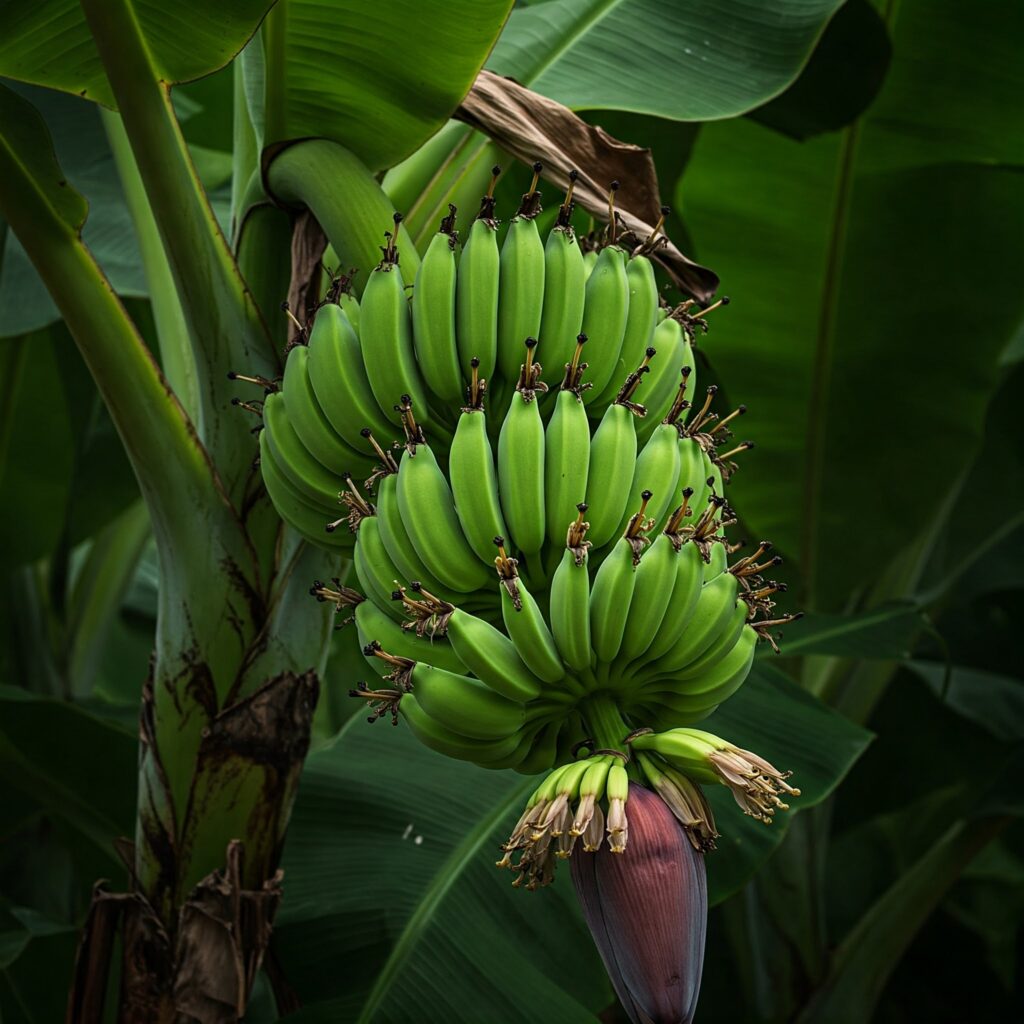
Stage 5: Maturation and Harvest – The Culmination of the Productive Cycle
Plantain maturation is a complex physiological process that involves changes in peel color, pulp texture, and sugar content. The optimal harvest time depends on the target market and the final use of the fruits (fresh consumption, processing). For the export market and fresh consumption, plantains are generally harvested at a green-mature stage, when they have reached an adequate size but are still firm.
Harvesting should be done carefully to avoid mechanical damage to the fruits, using sharp tools to cut the bunch and handling it with caution during transport and storage. Proper post-harvest handling, including cleaning, grading by size and quality, packaging, and temperature and humidity control during storage and transport, is fundamental to preserve quality and extend the shelf life of the fruits. The application of ethylene in controlled ripening chambers is used to induce uniform ripening of plantains before marketing.
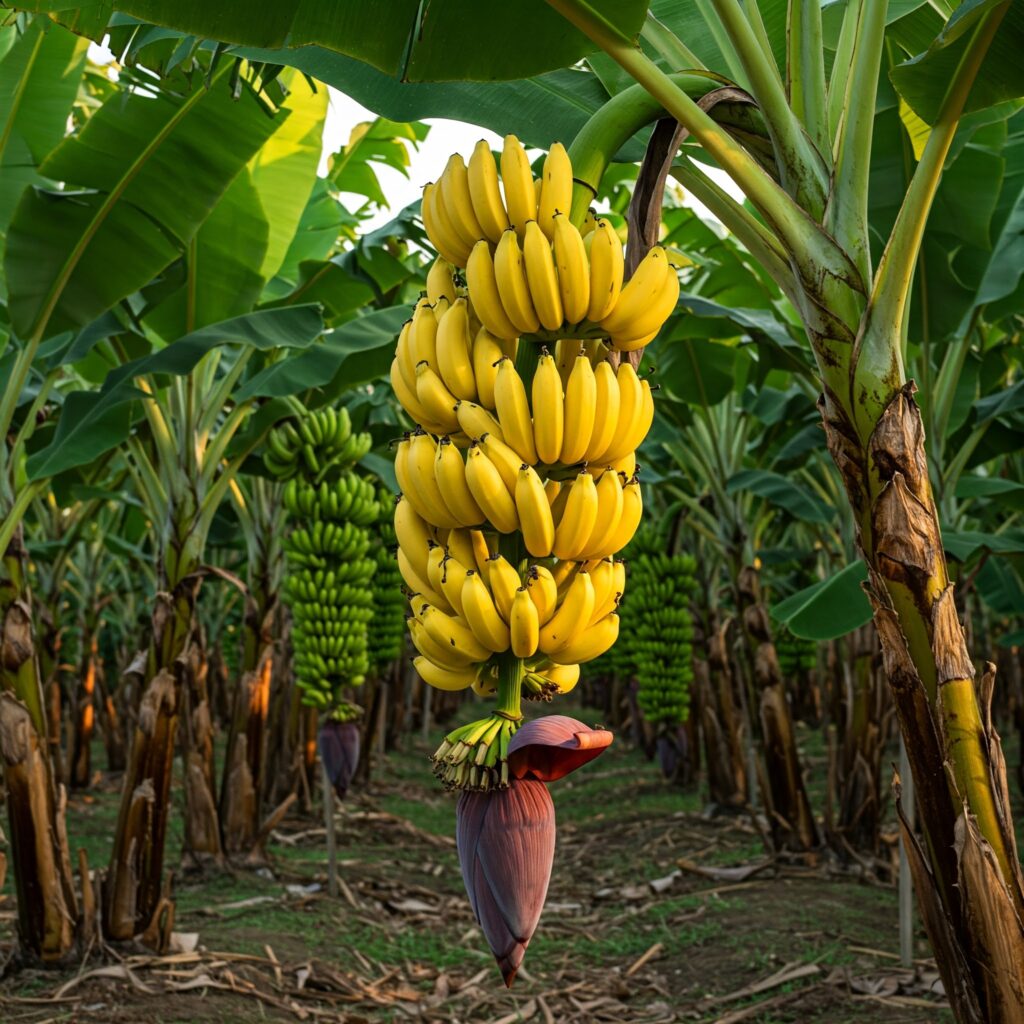
 AgronoBlog – Agriculture Blog
AgronoBlog – Agriculture Blog 
